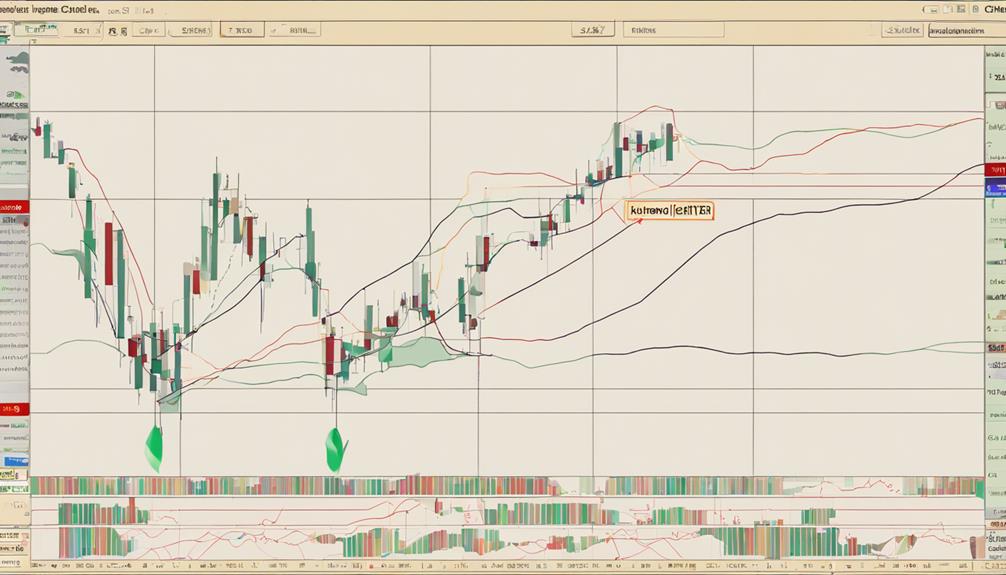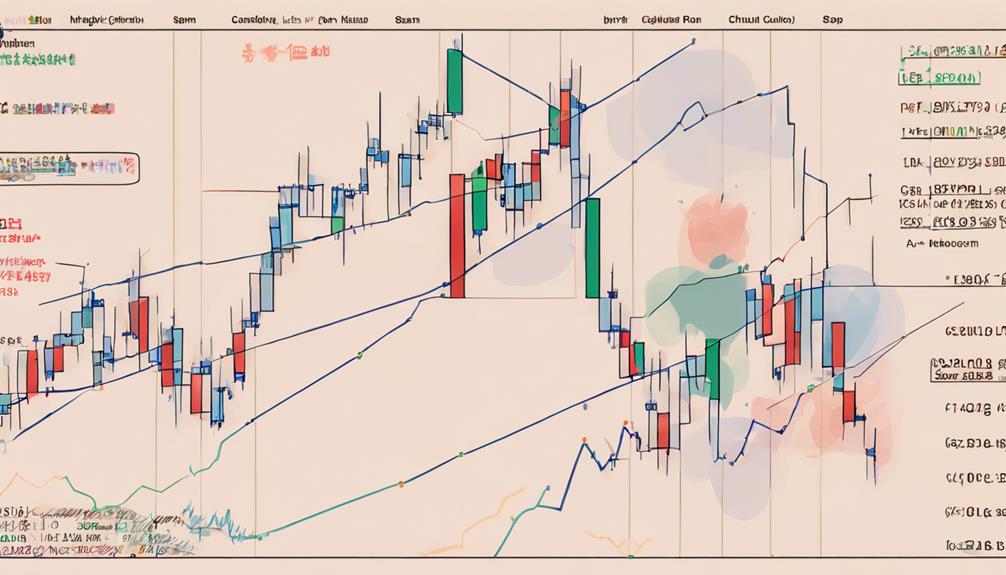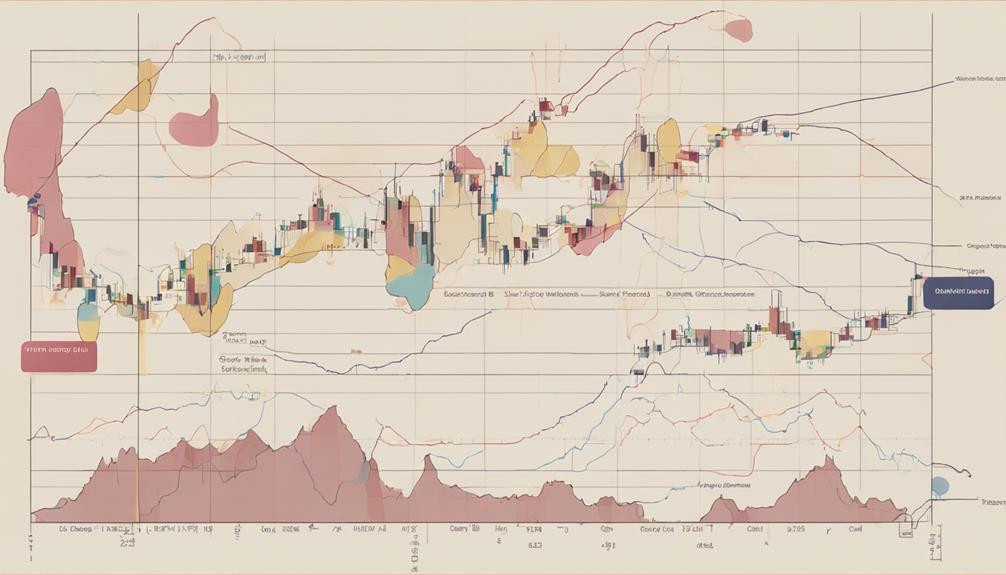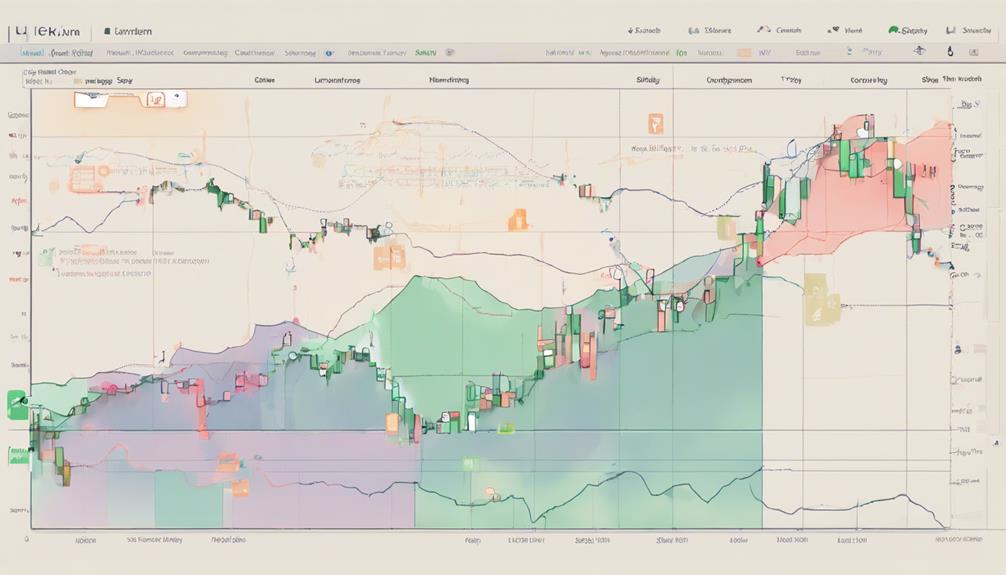When it comes to mastering the Ichimoku Cloud indicator, you might find yourself entangled in a web of complexities. However, fear not, as we've distilled seven straightforward tips to help you navigate this powerful tool with confidence.
From decoding its components to fine-tuning your trading strategies, each tip serves as a building block towards a more proficient understanding of the Ichimoku Cloud.
Stay tuned to uncover these practical insights that can elevate your trading game to new heights.
Understanding Ichimoku Cloud Indicator Basics
To grasp the fundamentals of the Ichimoku Cloud indicator, start by understanding its five key components, including the Conversion Line and Base Line. These lines form the foundation of the indicator, aiding in the determination of trend direction.
The Leading Span A and Leading Span B create the Cloud, offering insight into potential support and resistance levels. By recognizing the Cloud's color, traders can assess market bias – red for bearish and green for bullish.
This indicator equips you with valuable information for identifying entry/exit points and making informed trading decisions. By interpreting the relationship between price and the Cloud, you can navigate the markets with a clearer understanding, leading to more strategic and well-informed trading choices.
Identifying Key Ichimoku Cloud Components

Utilize the Ichimoku Cloud indicator by identifying its key components, each serving a specific role in trend analysis and decision-making.
- Tenkan-Sen: This line is calculated as the average of the highest high and the lowest low over the last 9 periods.
- Kijun-Sen: Computed as the average of the highest high and the lowest low over the last 26 periods.
- Chikou Span: Also known as the Lagging Span, it plots the closing price of the current candle shifted back by 26 periods.
Understanding the calculation methods and functions of these components is crucial for interpreting the Ichimoku Cloud signals effectively.
Interpreting Ichimoku Cloud Signals

Understanding how to interpret Ichimoku Cloud signals is essential for making informed trading decisions in the financial markets. When using the Ichimoku Cloud Indicator, a Conversion Line crossing above the Baseline generates a bullish signal, suggesting a potential uptrend. Conversely, a Conversion Line crossing below the Baseline indicates a possible bearish trend.
Additionally, price movement above the Cloud signifies a bullish bias, while movement below indicates a bearish bias. Traders can gauge the strength of a trend by observing the distance between Senkou Span A and Senkou Span B. These trade signals can be valuable for Swing Trading strategies, helping traders identify optimal entry and exit points based on the Kijun line, Span A and Leading Span B, cloud breaks, and price momentum in the market.
Applying Ichimoku Cloud in Trading

When incorporating Ichimoku Cloud in your trading strategy, it becomes crucial to analyze its components to derive valuable trade signals for informed decision-making in the financial markets. Here are some key aspects to consider when applying the Ichimoku Cloud indicator:
- Identification of Support and Resistance Levels: Utilize the cloud to pinpoint potential areas where the market may encounter barriers or assistance in price movement.
- Market Bias Interpretation: The cloud's formation offers a visual representation of the market bias, aiding in understanding the overall sentiment.
- Confirmation of Trend Direction: By analyzing the components' relationship, traders can confirm the trend direction and use it to make informed trading decisions.
Understanding these aspects can enhance your trading strategies and improve risk management.
Maximizing Ichimoku Cloud Indicator Benefits

To maximize the benefits of the Ichimoku Cloud indicator, align your trades with the trend direction indicated by the color of the cloud. This strategy is crucial for swing trading as it helps you stay on the right side of the market.
Utilize the Leading Span B to confirm the trend direction and assess potential entry and exit points. The Conversion Line and Base Line can offer valuable insights into momentum shifts, guiding your trading decisions effectively.
Pay close attention to the cloud boundaries to identify key support and resistance levels, aiding in risk management. By following these principles and integrating the Ichimoku Cloud into your trading discipline, you can optimize its advantages for informed and strategic trades.
Can the Quick Guide to Ichimoku Cloud Indicator Help Me Understand the Simple Tips for Navigation?
Yes, the quick Ichimoku cloud indicator can certainly help you understand simple tips for navigation in trading. By providing visual signals about support, resistance, and trend direction, this popular technical analysis tool can give you valuable insights for making informed trading decisions.
Frequently Asked Questions
What Is the Best Indicator to Use With Ichimoku Cloud?
For the best indicator to use with Ichimoku Cloud, consider the Relative Strength Index (RSI). RSI complements Ichimoku Cloud by confirming trade signals and providing a momentum perspective for more reliable decision-making. Enhance your trading strategies by combining both indicators.
How Do You Use Ichimoku Effectively?
To use Ichimoku effectively, focus on cloud support/resistance, Tenkan/Kijun lines for trends, and Senkou Span A/B for strength. Confirm trends with line crossovers. Combine Ichimoku with other tools for a thorough trading strategy.
What Is the Success Rate of the Ichimoku Cloud Indicator?
The Ichimoku Cloud indicator's success rate varies based on market conditions and trader skill. It is generally high when used with other tools. Backtesting historical data can offer insights. Correct interpretation and adaptability drive success.
What Is the Formula for Ichimoku Cloud Indicator?
To calculate the Ichimoku Cloud, plot midpoints of past prices to form a cloud. It uses various moving averages to determine upper and lower boundaries. Components like Conversion Line, Base Line, Lagging Span, and Leading Spans A and B influence its appearance.
Conclusion
You have learned the essential tips for navigating the Ichimoku Cloud indicator effectively. By understanding its components, interpreting signals, and applying specific trading strategies, you can maximize its benefits for successful trading.
Did you know that according to a recent survey, traders who use the Ichimoku Cloud indicator have reported a 20% increase in their trading accuracy?
Keep honing your skills and using this powerful tool to enhance your trading success.
